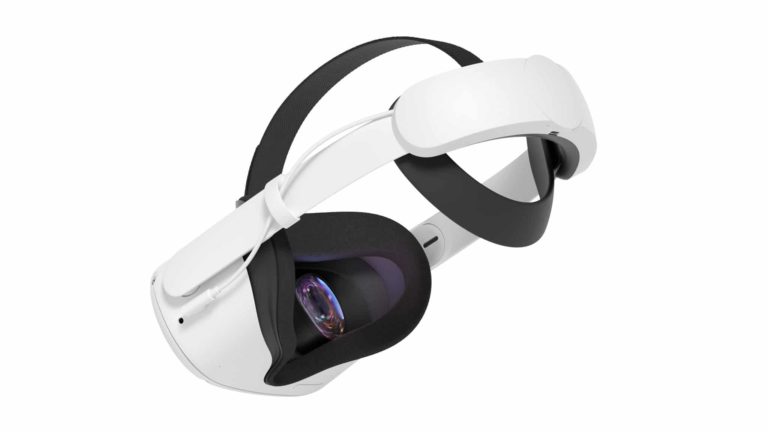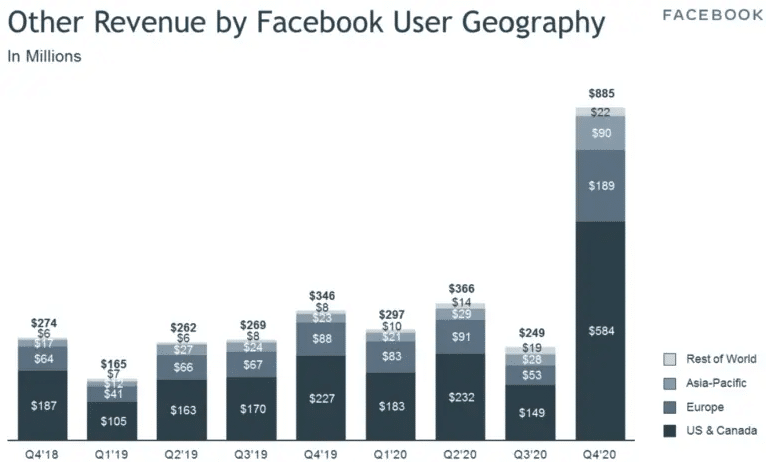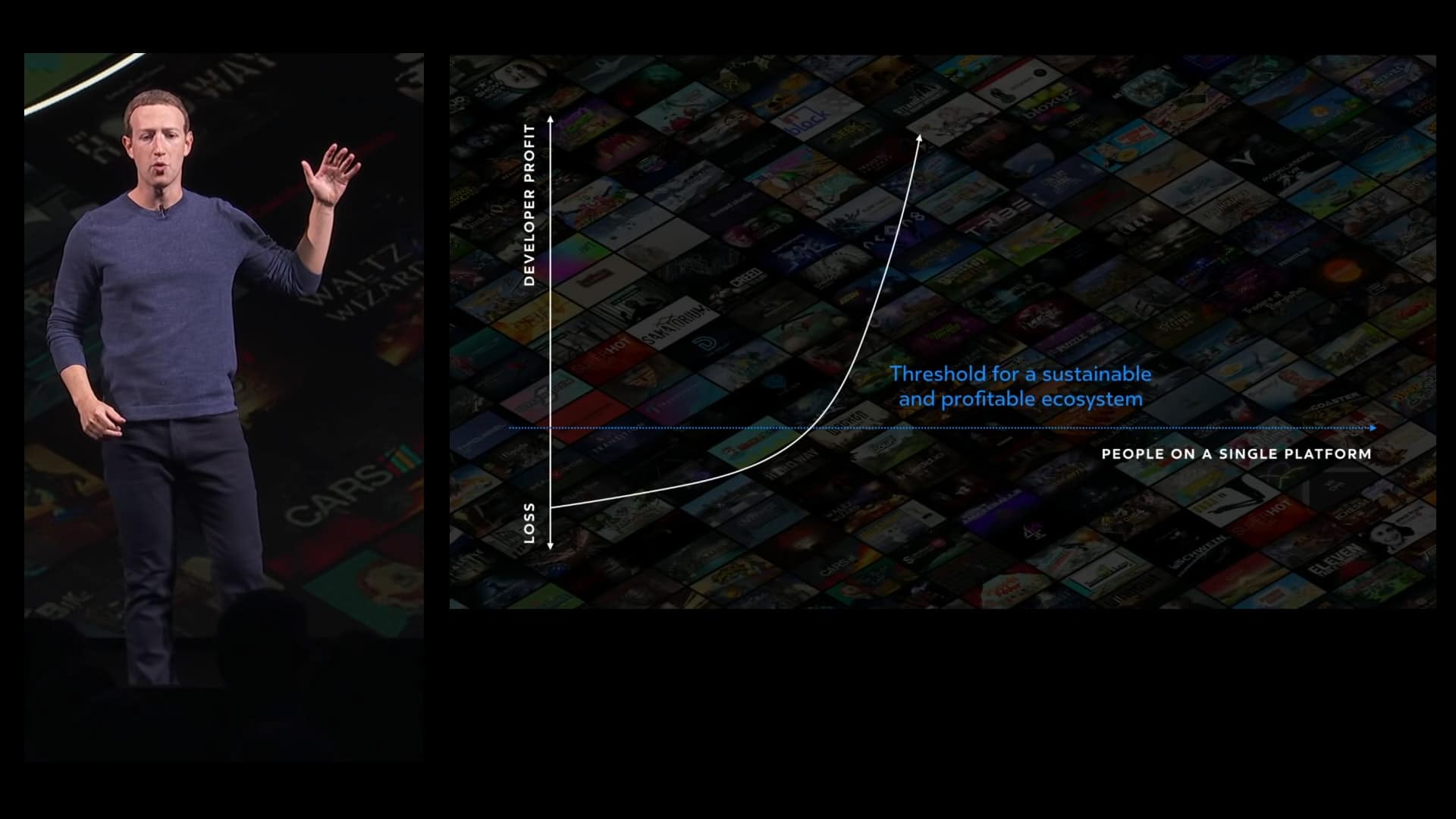
VR appears to be in the midst of a rebound. Covid-inflicted supply-chain impediments caused shipments to decline an estimated 10 percent in 2020, but that could have been worse if not for Quest 2’s Q4 performance. We’ve also seen a strong overall start for VR in 2021.
We continue to round up evidence to that effect. But going one level deeper, what market signals can serve as formula inputs to estimate Quest 2 unit sales specifically? As the current propellant for VR’s gradual mainstream penetration, Quest 2 sales levels can reveal key market insights.
So it’s time once again for our ongoing exercise to reason-out its unit sales. Each time we do this, formula inputs vary — everything from Facebook first-party software sales disclosures to public filings that help reveal sales volume and growth within Facebook’s “other revenue” category.
Today, we’re drawing upon the latter — the primary source being Facebook’s Q4 earnings call disclosure that it achieved 156 percent year-over-year growth in non-advertising revenue. It noted that most of this growth was from Quest 2, which launched at the beginning of Q4.
With that scene-setting, let’s dive in.
Two-Comma Club
Facebook’s Q4 non-advertising revenue — where Oculus revenues are categorized — were $885 million. As noted, the company specified during its earnings call that Oculus sales were a major growth driver. That’s of course a general statement but we can zero in using other signals.
If we look at Facebook’s non-advertising revenues pre-Oculus, it was a slow-growth quarterly revenue stream of about $250 million. If we estimate the non-Oculus portion today — consisting of Portal and few other things — to be $300 million, that leaves $585 million for Oculus.
That total includes hardware and software. If we extract the latter, we can isolate the former. We’ve separately estimated average software spend per user to be $125 (3-7 games). That’s about 28 percent of Oculus’s overall ARPU ($454), given $299-$399 hardware.*
That makes hardware revenue $421.2 million of the above $585 million. Based on other evidence, we estimate that Quest 2 is 80 percent of that — the rest being accessories and end-of-life Rift sales. That yields $336.96 million, or 1,024,195 Quest 2 units, at an average price of $329.*
Boiling it all down…
($885,000,000 – $300,000,000)(1-.28)(.80) / $329 = 1,024,195 Q4 Quest 2 units
*Quest 2 base model (64GB) is $299 while the 256GB model is $399. This averages out at $349, but we’ve reduced the estimated hardware ARPU to $329 due to weighted sales for the base model (common for new hardware). Third-party reseller markups aren’t included.

Magic Number
If the above estimates are on target (and remember, they’re just estimates), it validates our assertion that VR — driven by Quest 2 — is accelerating. The above Q4 sales compare to Quest cumulative lifetime sales (including Quest 1), which we estimated in Q3 to be one million.
This would make the total Quest 1 & 2 installed base 2.024 million units at the end of 2020, half of which came in Q4 alone. This also gets Facebook closer to Mark Zuckerberg’s target of 10 million units — the magic number where there’s critical mass to attract content developers en masse.
The thought is that an eight-figure installed base presents financial incentive for developers to flock to a given platform like osmosis. That engenders greater content libraries that attract more users, which in turn attract more developers and around we go. It’s a classic flywheel effect.
At its current pace — informed by the above estimates — Facebook could get to 10 million units in about six quarters or 1.5 years. Keep in mind that 10 million references a cumulative installed base of in-market units, which is different than (and builds faster than) period unit sales.
As Zuckerberg stated on Facebook’s Q4 earnings call:
”The big question is what is it going to take for it to be profitable for all developers to build these large efforts for VR? To get to that level, we think that we need about 10 million people on a given platform. That’s the threshold where the number of people using and buying VR content makes it sustainable and profitable for all kinds of developers. And once we get across this threshold, we think that the content and the ecosystem are just going to explode. Importantly, this threshold isn’t 10 million people across all different types of VR. Because if you build a game for Rift, it doesn’t necessarily work on Go or PlayStation VR. So we need 10 million people on [one] platform.”

In Perspective
As mentioned, there are several clues and formula inputs for a broader view of hardware sales. The exercise above is just one of them. For example, Rec Room recently estimated based on user data that Quest 2 Q4 sales were more like 2-3 million units. We’ll tackle that another day.
Meanwhile, as a disclaimer, the outputs of the above exercise are just that….a thought exercise. They aren’t official sales figures from Facebook, nor official projections of our research arm ARtillery Intelligence. But these exercises do inform ARtillery’s official market-sizing to come.
As further background, these ongoing exercises are compelled by the fact that companies in early-stage sectors like VR don’t disclose unit sales (except Sony). So we have to piece together clues from public filings, periodic disclosures or other formula inputs like content sales.
We like to think of this like a Sudoku board: using known quantities to logically devise unknown ones. It’s about perpetually collecting clues and building smart financial models. In an early and dynamic market (and a dynamic world), this will continue to be a moving target.

